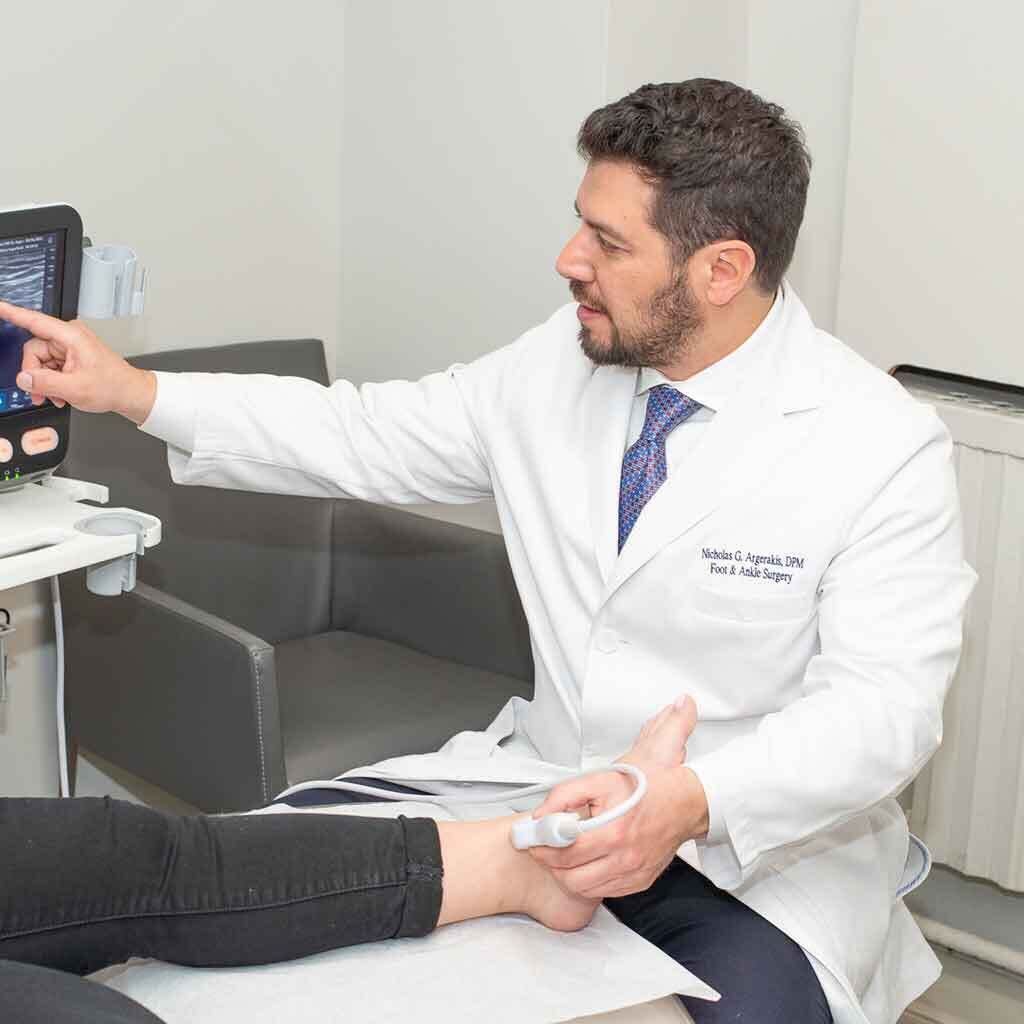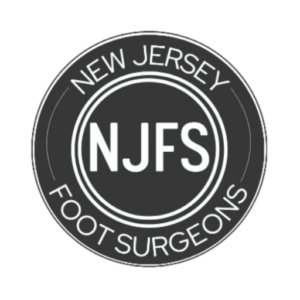Heel spurs cause persistent pain and limit mobility, disrupting daily life. Take the first step toward reclaiming your comfort and returning to the activities you love.
Under the expert care of Dr. Nick Argerakis, DPM, a board-certified podiatric surgeon specializing in advanced foot and ankle treatments, our clinic offers cutting-edge techniques to ensure fast, effective results. Every patient benefits from a personalized treatment plan tailored to their unique health goals.
Key Takeaways:
- Heel spurs are caused by calcium deposits on the heel bone due to repetitive strain, leading to pain and limited mobility.
- Surgery options include open surgery, minimally invasive endoscopic techniques, plantar fascia release, bone spur resection, and Achilles tendon lengthening.
- Each surgical approach aims to alleviate pain, improve function, and restore mobility with minimal disruption to daily life.
- Personalized treatment plans and advanced techniques ensure optimal results tailored to individual needs.
- Take action today to reclaim comfort and mobility—call (732) 320-9173 to begin your journey toward relief.
Understanding Heel Spurs
Heel spurs are bony growths that develop on the underside of the heel bone (calcaneus), often associated with plantar fasciitis. These spurs form due to long-term stress on the plantar fascia, the thick ligament that supports the arch of the foot. When the plantar fascia experiences repeated strain or micro-tears, the body responds by depositing calcium in the affected area, leading to spur formation. Over time, heel spurs can cause sharp pain, inflammation, and difficulty walking or standing for prolonged periods.
Several factors contribute to the development of heel spurs, including prolonged walking or running, wearing unsupportive footwear, obesity, and natural aging. People with medical conditions such as diabetes or arthritis are also at higher risk. While not all heel spurs cause pain, when symptoms persist despite conservative treatment, surgery may become necessary.
When Is Heel Spur Surgery Necessary?
Heel spur surgery is considered only when conservative treatments fail to provide relief after at least six to twelve months. Patients experiencing persistent heel pain that interferes with daily activities, chronic inflammation in the plantar fascia, or difficulty walking due to discomfort may be candidates for surgery. In severe cases, untreated heel spurs can lead to postural imbalances, causing pain in other parts of the body, such as the knees, hips, or lower back.
Doctors typically recommend non-surgical options first, such as rest, ice therapy, stretching exercises, orthotics, anti-inflammatory medications, or corticosteroid injections. If these methods do not provide long-term relief, surgical intervention may be the best course of action to restore mobility and eliminate pain.

Types of Heel Spur Surgery
Open Heel Spur Surgery
Open heel spur surgery is a traditional approach that involves making an incision in the heel to access and remove the bony spur. In some cases, surgeons may also address ligament or fascia issues that contribute to the pain. This method is effective for larger spurs but typically requires a longer recovery time compared to minimally invasive techniques.
Endoscopic Heel Spur Surgery
Endoscopic surgery is a minimally invasive procedure that uses a small camera (endoscope) and specialized instruments to visualize and remove the heel spur with minimal tissue disruption. This technique results in smaller incisions, reduced post-operative pain, and faster healing. Patients who undergo endoscopic surgery often experience a quicker return to daily activities compared to those who have open surgery.
Plantar Fascia Release
For patients suffering from severe plantar fasciitis in addition to heel spurs, a plantar fascia release may be performed. This procedure involves partially cutting the plantar fascia ligament to reduce tension and inflammation. By alleviating stress on the ligament, pain is minimized, and overall foot function improves.
Bone Spur Resection
Bone spur resection is a precise surgical technique that removes only the protruding bony growth while preserving the surrounding soft tissues. This method ensures that the foot maintains its natural biomechanics and function. It is often combined with other procedures, such as plantar fascia release, for optimal results.
Achilles Tendon Lengthening
In cases where a tight or contracted Achilles tendon is contributing to heel pain, Achilles tendon lengthening may be recommended. By lengthening the tendon, pressure on the heel bone is reduced, leading to improved flexibility and decreased discomfort. This procedure is particularly beneficial for patients with limited ankle mobility due to tight calf muscles.

Benefits and Risks of Heel Spur Surgery
Benefits
Heel spur surgery provides significant pain relief, allowing patients to resume daily activities without discomfort. By eliminating the bony spur, the surgery restores normal foot function and improves mobility. Many patients report an enhanced quality of life after surgery, as they can walk, stand, and exercise with ease. Additionally, addressing the underlying issue can prevent long-term complications, such as chronic inflammation or secondary joint pain.
Risks
Like any surgical procedure, heel spur surgery carries potential risks. Infection at the surgical site is a possibility, but proper wound care helps minimize this risk. Nerve damage near the heel may occur, leading to numbness or altered sensations. Some patients experience delayed wound healing, especially those with underlying health conditions such as diabetes. In rare cases, pain may return if the underlying biomechanical issues are not addressed through physical therapy and proper footwear.
Recovery and Post-Surgical Care
Recovery time depends on the type of surgery performed and the individual’s overall health. On average, patients can expect to recover within six to twelve weeks for most heel spur removal procedures. Minimally invasive surgeries, such as endoscopic procedures, typically result in faster healing, whereas open surgery may require a longer recovery period.
Post-operative care is crucial to ensure successful healing. Patients are advised to rest and keep their foot elevated to reduce swelling. The use of crutches or a walking boot may be necessary to avoid placing weight on the affected foot. Physical therapy plays a vital role in the recovery process, as it helps restore strength, flexibility, and proper foot mechanics. Supportive footwear and custom orthotics are recommended to prevent future heel spurs and maintain proper arch support.
Non-Surgical Alternatives for Heel Spurs
Before considering surgery, doctors explore non-invasive treatments to manage heel spur pain. Rest and ice therapy help reduce inflammation, while stretching exercises target the plantar fascia and Achilles tendon to improve flexibility. Custom orthotics provide additional support, redistributing pressure away from the heel. Anti-inflammatory medications, such as NSAIDs, can offer temporary pain relief. For more severe cases, corticosteroid injections may help control inflammation and alleviate discomfort. When conservative treatments fail to provide lasting relief, surgery remains a viable option.
Conclusion
Heel spur surgery is an effective solution for chronic pain and mobility issues. Our team provides compassionate, advanced care with customized treatment plans to help patients achieve a pain-free lifestyle.
If conservative measures have not provided relief, reach out for help. Contact us today to schedule a consultation with our expert podiatric surgeons and take the first step toward recovery. Call (732)-320-9173 today to schedule a consultation and take the first step toward a pain-free future!


